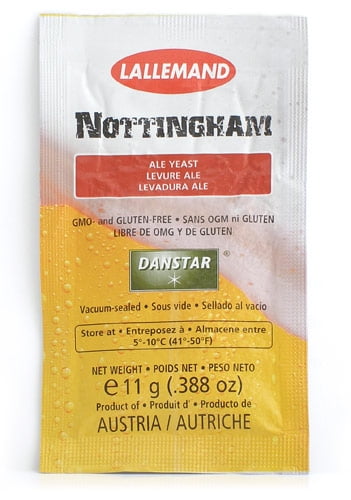

The body was also little thin for my tastes, which I might fix by upping the amount of Munich in the grist. I thought the beers tasted great! Not quite as malty as I prefer Munich Dunkel to be, but noticeably bready and toasty with a light chocolate character. Interestingly, my wife, who was 38 weeks pregnant at the time, consistently identified the unique sample 3 triangle tests based on aroma alone. Regardless of my focus, attempts to set aside bias, or even beer temperature, the samples were indistinguishable to me. Out of 4 blind triangle tests, I only picked the odd-beer-out 2 times, and even then I was guessing. My Impressions: Given the results of Marshall’s experiment, I expected to not notice a difference between the beers, and that’s exactly what happened. While 13 tasters (p<0.05) would have had to accurately identify the unique sample in order to reach statistical significance, only 11 (p=0.14) did so, indicating participants in this xBmt were not able to reliably distinguish a beer made with dry yeast that was directly pitched on the wort from one where the yeast was rehydrated prior to pitching. Each participant was served 1 sample of the direct pitch beer and 2 samples of the rehydrated beer in different colored opaque cups then asked to identify the unique sample. Left: direct pitch | Right: rehydrated pitch | RESULTS |Ī total of 24 people of varying levels of experience participated in this xBmt. In this replication xBmt, I set out to brew the same beer following the same procedures as Marshall did the first time around.

It’s been 4 years and 208 xBmts since Marshall put rehydrated versus direct pitch yeast to the test, which did not reach a significant result. Later, I went on to use liquid yeast and eventually starters, but I always wondered whether that rehydration step was really necessary. Lallemand goes on to report a list of issues observed when non-rehydrated yeast was used under certain brewing conditions:įor these reasons, I used rehydrated yeast in my next few batches with seemingly better results. Careful precautions were taken when drying the yeast and the brewer has the opportunity to revert the process to obtain a highly viable and vital liquid slurry. There are important rules to follow to slowly transition the cells back to a liquid phase. Rehydration is a crucial step to ensure rapid and complete fermentation. The first paragraph to Lallemand’s recommended rehydration procedure says as much: To avoid that, they suggest to gently rehydrate the yeast before pitching. According to the texts, yeast cell walls that get altered during the yeast drying process could be damaged-sometimes lethally-when direct pitched into unfermented wort. I’d read over and over again that dry yeast should always be rehydrated before pitching. Plenty of brewing texts offer tips, tricks and alleged solutions for making better beer. What could I do next time to make it better? Looking back now, 6 years after I brewed that first beer, that question feels like Morpheus’ red pill/blue pill dilemma: Should I just accept my “okay” beer or should I see how deep the rabbit hole goes?

I just made beer!), but nowhere near great. The beer was drinkable ( Holy chemistry, Batman. Like many homebrewers, the first beer I brewed used dry yeast from an unmarked package that I sprinkled directly into the fermentor. Visit The Brü Club website for more information on this series. Articles featured on are selected by The Brü Club leadership prior to being submitted for publication.
Nottingham yeast series#
While members who choose to participate in this series generally take inspiration from Brülosophy, the bulk of design, writing, and editing is handled by members unless otherwise specified. This xBmt was completed by a member of The Brü Club as a part of The Brü Club xBmt Series in collaboration with Brülosophy.


 0 kommentar(er)
0 kommentar(er)
